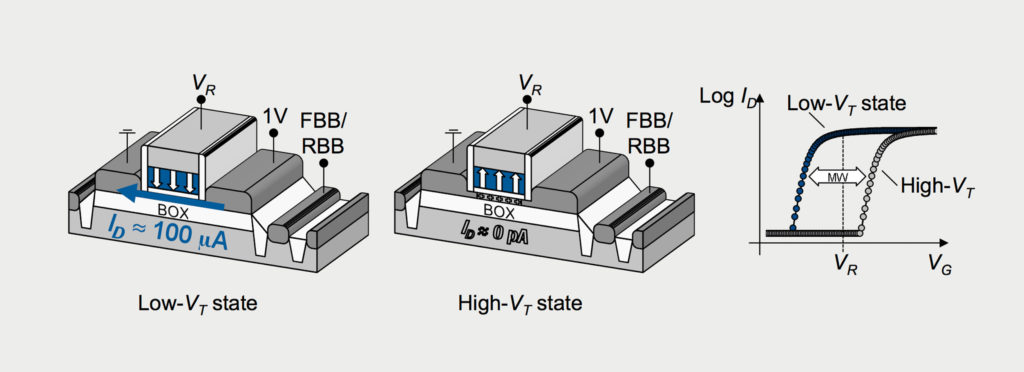One-Transistor FeFET memory
Due to the fact that hafnium oxide represents the state-of-the-art gate insulator for literally all high-k metal-gate (HKMG) process nodes, the inherent advantage of ferroelectric HfO2 is immediately revealed: You can take a standard HKMG transistor, modify its gate insulator to become ferroelectric and end up with the industry’s first nonvolatile HKMG transistor, the FeFET (see Fig. 3).
The FeFET shows nonvolatile characteristics due to the fact that the two stable, remanent polarization states of the now ferroelectric gate insulator modify the threshold voltage even when supply voltage is removed. Accordingly, the binary states are encoded in the threshold voltage of the transistor (see Fig. 4). Even though similar to Flash in its operation, the FeFET provides orders of magnitude improvement in almost any performance attribute (see also “Major differentiation to competition”). The FeFET for HKMG is introduced in order to become what Flash is today for Poly / SiON technology nodes: The overall leader in nonvolatile memories.

Fig. 3: Way of deriving nonvolatile FeFETs from standard HKMG logic transistors (exemplified for a Fully-Depleted-Silicon-On-Insulator (FDSOI) technology platform)

Fig. 4: Illustration of FeFET (n-type) functionality. When the ferroelectric polarization is pointing downwards (left) electrons invert the channel region permanently bringing the FeFET into the "ON"-state. If the polarization is pointing upwards (middle), permanent accumulation is created and the FeFET is in the "OFF"-state. Accordingly, binary states are encoded in the threshold voltage of the transistor (right).
